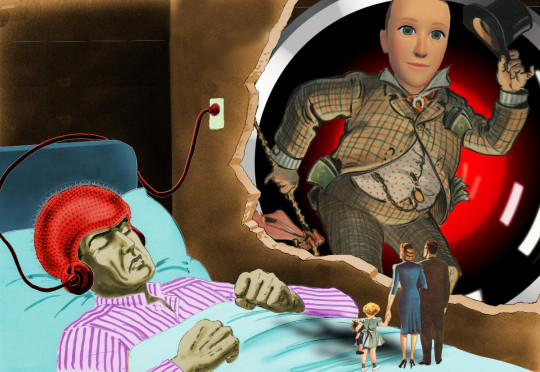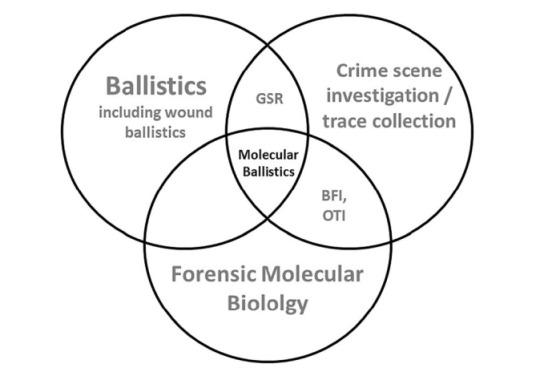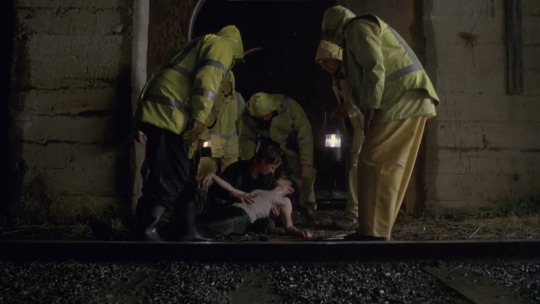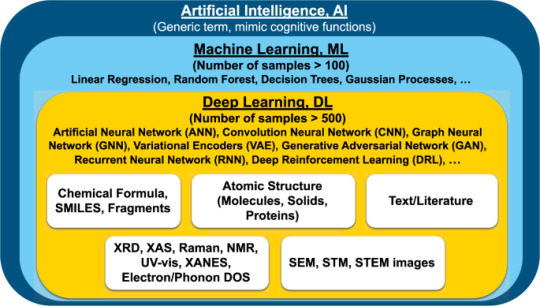#What are the Applications of Data Science
Explore tagged Tumblr posts
Text
What a handsome Komodo dragon!
Except... what's going on with those labial scales? Something about them looks off. And that row of spikes down the back, Komodos don't have that. And their nostrils aren't so round. Hm. I think I know what's happening here.
I did not realize that this was AI at first glance; I thought it was just a really heavy editing style. I saw the missing central toe, yeah, but Komodos will do that to each other sometimes. The other forefoot, the one with four toes, is positioned in such a way that the fifth toe could be hidden, and the lifted hind foot could be similar.
But if you know Komodo dragon anatomy like I do, the inaccuracies pop up pretty quickly. Still, it's not like it was during the early days of GenAI; what I'm seeing here is that the GenAI image algos are getting better at discerning what part of a picture is a Komodo dragon. Since the inception, GenAI has really struggled to make accurate reptiles. In the beginning, everything was an iguana... even the Komodo dragons.

Over time, the models have been refined, but there are still some pretty obvious anatomy differences- the slit pupils, the mouth shape, the overall definition of the snout...

And they often struggle with the tongue. This isn't what the inside of a lizard's mouth looks like!

There's a lot of talk about how GenAI is bad for the brain- but it seems like most of it is actually about writing. And I think we should be talking more about images, too. Not even just about the stolen training data or the erosion of opportunities for artists, but... what is such easy access to these generated images doing to our ability to perceive what's real versus what isn't?
Every single one of the images I pulled is from a highly popular stock photo site. In case you don't know what a stock photo is, it's a photograph (you can also have stock illustrations and stock footage) that's been licensed to use in different applications. These pictures aren't taken for a specific client; anybody who pays can use them within the terms of the image's license.
But all of these images- they're not photos. They're inaccurate illustrations. I recognize them for what they are because I spend a lot of time looking at lizards, but what if you've got someone writing a quick news story, or designing a science worksheet, or throwing together a museum brochure or a zoo sign? If they don’t know what a Komodo dragon is supposed to look like, they’ll use whatever looks convincing.
Images trigger something deep within us- you know that saying "A picture is worth a thousand words?" We're wired to trust what we see. But the problem here is that genAI doesn't create an image of the thing; it creates what its internal logic says is associated with the subject of the prompt. It all comes down to probability; generative AI makes images by looking at its training data and creating output based on what the data is associated with.
(For more info on how AI "sees" what it does, check out the LENS project, which you can read more about here.)
We don't see things the same way the computers do, and we're willing to trust images more than words. How many stock photos do you think you see each day? It's probably more than you think; after all, the average American sees around 5,000 ads per day. And while those photos are marked as AI generated on the stock sites, they aren't marked as AI generated once someone has licensed them. And if the stock site doesn't have what you need? No problem, just use the AI image generator to fake that photo yourself!
We already have seen political deepfakes and AI generated images used to spread misinformation. Did you see the image of an ICE agent arresting a Doordash worker? That was an AI fake, part of a larger hoax. Some of us are already learning to respond with increased skepticism to important images, because people have an agenda to fake those. But what about the less important images, the background images, the completely mundane images? GenAI seems to be quietly coming for them, and it's something we should be paying attention to, because if we're exposed, constantly and quietly, to generated images and are trained to believe it's photography, we'll be more accepting of the bigger lies when we see them.
I don't really know what the solution is here, other than for people to be aware of the stock image issue, and to stop using stock sites that allow generated images, like Adobe Stock. We can't put the generative AI genie back in the bottle, but we can at least be aware of the damage it's causing. And maybe part of the solution is to look for alternative stock and reference options. Maybe we'll start to see more photographers licensing their images directly, or putting together specialized repositories of images based around a theme or topic that they specialize in. The downside there is that it's less convenient than the stock model where there's thousands and thousands of images on every conceivable topic to choose from. I don't know what genAI is going to do to the traditional stock model, but I'm concerned about what the end results might be and what those results might do to our ability to perceive reality.

Komodo Dragon
3K notes
·
View notes
Text
Applications of Data Science Certification Across Industries

Data science certification has become one of the most valuable credentials in today’s digital world. With the rising importance of data in business decision-making, companies across all industries are actively hiring professionals who can analyze data and extract meaningful insights. A certification in data science not only builds your technical skills but also opens the door to exciting career opportunities.
This article explores how data science training is used in different industries and why earning a certification in this field is a smart move for your future.
Business Analytics
One of the most common applications of data science is in business analytics. Companies collect massive amounts of data from customers, sales, and marketing campaigns. With the help of data science, businesses can analyze this data to understand customer behavior, market trends, and sales performance.
This helps in making smart decisions regarding pricing, product development, and marketing strategies. For example, companies use data to group customers based on their interests or buying habits — a process called customer segmentation. Data science also supports inventory management by predicting which products will be in demand, helping companies reduce waste and increase profit.
Healthcare and Medicine
Data science has made a major impact in healthcare and medicine. Hospitals and researchers use data to improve patient care and develop better treatments. One key use is in diagnosing diseases early using machine learning tools that analyze medical images like X-rays or MRIs.
Data science also helps doctors predict how a patient might respond to a treatment and create personalized care plans. Additionally, it plays a big role in drug discovery by speeding up the testing of new medicines. Healthcare operations also benefit from data science by improving the use of resources like hospital beds and staff schedules. These improvements lead to better patient outcomes and lower costs for healthcare providers.
Finance and Banking
In the finance industry, data science is used to manage risk, detect fraud, and improve customer experience. For example, banks use machine learning to identify unusual transactions that could be signs of fraud.
Credit scores are also calculated using data science models that analyze spending habits and payment history. In investment firms, data is used to develop algorithms that make trades automatically, based on real-time market data. Financial institutions also use data to offer personalized recommendations for savings, insurance, or loans. This helps improve customer trust and retention.
E-commerce and Retail
Online businesses and retail stores use data science to understand their customers better and improve sales. One popular use is personalized product recommendations. When you shop online, the suggestions you see are often powered by data science models that study your browsing and purchase history. Retailers also use data to adjust prices based on demand or offer discounts to loyal customers.
Another important use is in managing inventory and supply chains. By predicting which items are likely to sell more, stores can keep their shelves stocked with what customers want. Analyzing customer reviews and social media feedback also helps companies improve their products and services.
Manufacturing and Operations
In the manufacturing sector, data science is used to improve efficiency, reduce waste, and avoid breakdowns. One major application is predictive maintenance. Machines and equipment are monitored using sensors, and data is collected to predict when they might fail.
This helps companies fix problems before they cause costly downtime. Data science is also used in quality control to detect defects in products during production. Manufacturers use data to optimize supply chains, manage resources, and forecast product demand. As a result, production becomes faster, cheaper, and more reliable.
Energy and Utilities
Energy companies use data science to manage power grids, improve energy efficiency, and support renewable energy projects. For example, utility companies collect data on electricity usage to predict future demand and avoid blackouts.
Data science also helps in scheduling maintenance of power plants and equipment to prevent failures. In renewable energy, it is used to forecast solar or wind energy production based on weather data. This helps energy providers plan better and reduce reliance on non-renewable sources.
Conclusion Data science certification is more than just a qualification — it's a gateway to careers in multiple industries. From healthcare and finance to retail and energy, data science plays a crucial role in improving decision-making, efficiency, and innovation. By earning a certification, you gain the knowledge and skills needed to work with data tools, build machine learning models, and solve real-world problems.
If looking to upgrade your skills, data science certification prepares you for the future. As industries continue to rely more on data, the demand for certified professionals will only increase. So, if you’re ready to make a smart career move, now is the perfect time to enroll in a data science certification course and start your journey.
0 notes
Text
comp sci is still a great field to get hired within, provided you magically already have 5 years of experience, then the amounts of money they want to pay you are obscene. You’ll make more in an hour than my min-wage part time friends will make in a week. Also everyone’s willing to take you for free. Which is why there are ‘jobs’ in the US tech market. Ask those ‘interns’ how much they’re making. No-pay jobs are illegal in Canada and that’s why no one’s hiring. That’s why the stories about how programmers and otherwise thinking roles in software development are ‘obsolete’ and ‘can be done by AI’. They can’t actually. Firstly because having your AI write your code would require you to give someone like OpenAI, Google or Meta, third parties that are not between you and your clients, protected data, which is insane. Secondly the one non-tech guy you retain or the tech lead you’ve asked to double check the AI’s work but is in Teams meetings from 6 AM to 7 PM, is not going to catch an AI’s various security vulnerabilities. So have fun. “We don’t need software developers anymore” my whole entire sat-in-an-office-chair-for-8-hours ass. Private companies will crumble without us. This is purely a cash thing.
#computer science#software development#artificial intelligence#if you’re trusting an AI to build your website or internal applications—what are they calling it now? ‘Vibe coding’?#Then you better not have any data of consequence on there lmao#Invariably you will. It’s a cute proof of concept but unless your AI is fully inhouse you’re mad to use it#And if you’ve gone to the effort of building your own AI why not sell that product etc etc we’re back to square one
0 notes
Text
I swear, Dottore was written by a former STEM graduate. People don't normally write mad scientists this way.
Whenever I try to dig into deep lore, his research repeatedly turns out to be among the most useful data I have.
I know a good project when I see one. I've been on both sides of the academic hiring process, I've written grant proposals and I've reviewed them and I've seen better scientists than me discuss them, so please understand how much weight I put into this: these are very good projects.
(except for, you know, ethics)
His research topics seem random but he actually pokes at the most fundamental questions of Teyvat with each one.
His Eleazar studies dig at the relationship between forbidden knowledge and dead gods (surprise: these are different things. I might have lumped them together if not for his notes).
Cloning himself pokes at the difference between machine and man, and also it's the technology of Eclipse Dynasty, Teyvat's main historical enigma. Have you ever wondered whether all ruin guards were men once? Or why did Khaenri'ahns switch from alchemy to ruin machines so abruptly? Or why they were cursed.
(I have a suspicion it also pokes at the nature of time and stories, the way he talks about a need for an ideal observer, and also the way Khaenri'ahn history went)
Delusions answer the question of why does Teyvat need Archons for Visions to appear and for humans to be able to use elemental magic. We don't know the answer but Dottore does.
I'm eyeing his artificial god because I don't think that what we saw in Sumeru was the final project. He seemed so nonchalant when it failed.
This is theoretical science at its finest. As a cherry on top, every project also yields practically applicable results.
He's a dream of every grant commitee.
1K notes
·
View notes
Text
The kind of research I like to see
And with a nice clear abstract. 😀
”Despite originating in science fiction, warp drives have a concrete description in general relativity, with Alcubierre first proposing a spacetime metric that supported faster-than-light travel. Whilst there are numerous practical barriers to their implementation in real life, including a requirement for negative energy, computationally, one can simulate their evolution in time given an equation of state describing the matter. In this work, we study the signatures arising from a warp drive ‘containment failure’, assuming a stiff equation of state for the fluid. We compute the emitted gravitational-wave signal and track the energy fluxes of the fluid. Apart from its rather speculative application to the search for extraterrestrial life in gravitational-wave detector data, this work is interesting as a study of the dynamical evolution and stability of spacetimes that violate the null energy condition. Our work highlights the importance of exploring strange new spacetimes, to (boldly) simulate what no one has seen before.”
324 notes
·
View notes
Text
Conspiratorialism as a material phenomenon

I'll be in TUCSON, AZ from November 8-10: I'm the GUEST OF HONOR at the TUSCON SCIENCE FICTION CONVENTION.

I think it behooves us to be a little skeptical of stories about AI driving people to believe wrong things and commit ugly actions. Not that I like the AI slop that is filling up our social media, but when we look at the ways that AI is harming us, slop is pretty low on the list.
The real AI harms come from the actual things that AI companies sell AI to do. There's the AI gun-detector gadgets that the credulous Mayor Eric Adams put in NYC subways, which led to 2,749 invasive searches and turned up zero guns:
https://www.cbsnews.com/newyork/news/nycs-subway-weapons-detector-pilot-program-ends/
Any time AI is used to predict crime – predictive policing, bail determinations, Child Protective Services red flags – they magnify the biases already present in these systems, and, even worse, they give this bias the veneer of scientific neutrality. This process is called "empiricism-washing," and you know you're experiencing it when you hear some variation on "it's just math, math can't be racist":
https://pluralistic.net/2020/06/23/cryptocidal-maniacs/#phrenology
When AI is used to replace customer service representatives, it systematically defrauds customers, while providing an "accountability sink" that allows the company to disclaim responsibility for the thefts:
https://pluralistic.net/2024/04/23/maximal-plausibility/#reverse-centaurs
When AI is used to perform high-velocity "decision support" that is supposed to inform a "human in the loop," it quickly overwhelms its human overseer, who takes on the role of "moral crumple zone," pressing the "OK" button as fast as they can. This is bad enough when the sacrificial victim is a human overseeing, say, proctoring software that accuses remote students of cheating on their tests:
https://pluralistic.net/2022/02/16/unauthorized-paper/#cheating-anticheat
But it's potentially lethal when the AI is a transcription engine that doctors have to use to feed notes to a data-hungry electronic health record system that is optimized to commit health insurance fraud by seeking out pretenses to "upcode" a patient's treatment. Those AIs are prone to inventing things the doctor never said, inserting them into the record that the doctor is supposed to review, but remember, the only reason the AI is there at all is that the doctor is being asked to do so much paperwork that they don't have time to treat their patients:
https://apnews.com/article/ai-artificial-intelligence-health-business-90020cdf5fa16c79ca2e5b6c4c9bbb14
My point is that "worrying about AI" is a zero-sum game. When we train our fire on the stuff that isn't important to the AI stock swindlers' business-plans (like creating AI slop), we should remember that the AI companies could halt all of that activity and not lose a dime in revenue. By contrast, when we focus on AI applications that do the most direct harm – policing, health, security, customer service – we also focus on the AI applications that make the most money and drive the most investment.
AI hasn't attracted hundreds of billions in investment capital because investors love AI slop. All the money pouring into the system – from investors, from customers, from easily gulled big-city mayors – is chasing things that AI is objectively very bad at and those things also cause much more harm than AI slop. If you want to be a good AI critic, you should devote the majority of your focus to these applications. Sure, they're not as visually arresting, but discrediting them is financially arresting, and that's what really matters.
All that said: AI slop is real, there is a lot of it, and just because it doesn't warrant priority over the stuff AI companies actually sell, it still has cultural significance and is worth considering.
AI slop has turned Facebook into an anaerobic lagoon of botshit, just the laziest, grossest engagement bait, much of it the product of rise-and-grind spammers who avidly consume get rich quick "courses" and then churn out a torrent of "shrimp Jesus" and fake chainsaw sculptures:
https://www.404media.co/email/1cdf7620-2e2f-4450-9cd9-e041f4f0c27f/
For poor engagement farmers in the global south chasing the fractional pennies that Facebook shells out for successful clickbait, the actual content of the slop is beside the point. These spammers aren't necessarily tuned into the psyche of the wealthy-world Facebook users who represent Meta's top monetization subjects. They're just trying everything and doubling down on anything that moves the needle, A/B splitting their way into weird, hyper-optimized, grotesque crap:
https://www.404media.co/facebook-is-being-overrun-with-stolen-ai-generated-images-that-people-think-are-real/
In other words, Facebook's AI spammers are laying out a banquet of arbitrary possibilities, like the letters on a Ouija board, and the Facebook users' clicks and engagement are a collective ideomotor response, moving the algorithm's planchette to the options that tug hardest at our collective delights (or, more often, disgusts).
So, rather than thinking of AI spammers as creating the ideological and aesthetic trends that drive millions of confused Facebook users into condemning, praising, and arguing about surreal botshit, it's more true to say that spammers are discovering these trends within their subjects' collective yearnings and terrors, and then refining them by exploring endlessly ramified variations in search of unsuspected niches.
(If you know anything about AI, this may remind you of something: a Generative Adversarial Network, in which one bot creates variations on a theme, and another bot ranks how closely the variations approach some ideal. In this case, the spammers are the generators and the Facebook users they evince reactions from are the discriminators)
https://en.wikipedia.org/wiki/Generative_adversarial_network
I got to thinking about this today while reading User Mag, Taylor Lorenz's superb newsletter, and her reporting on a new AI slop trend, "My neighbor’s ridiculous reason for egging my car":
https://www.usermag.co/p/my-neighbors-ridiculous-reason-for
The "egging my car" slop consists of endless variations on a story in which the poster (generally a figure of sympathy, canonically a single mother of newborn twins) complains that her awful neighbor threw dozens of eggs at her car to punish her for parking in a way that blocked his elaborate Hallowe'en display. The text is accompanied by an AI-generated image showing a modest family car that has been absolutely plastered with broken eggs, dozens upon dozens of them.
According to Lorenz, variations on this slop are topping very large Facebook discussion forums totalling millions of users, like "Movie Character…,USA Story, Volleyball Women, Top Trends, Love Style, and God Bless." These posts link to SEO sites laden with programmatic advertising.
The funnel goes:
i. Create outrage and hence broad reach;
ii, A small percentage of those who see the post will click through to the SEO site;
iii. A small fraction of those users will click a low-quality ad;
iv. The ad will pay homeopathic sub-pennies to the spammer.
The revenue per user on this kind of scam is next to nothing, so it only works if it can get very broad reach, which is why the spam is so designed for engagement maximization. The more discussion a post generates, the more users Facebook recommends it to.
These are very effective engagement bait. Almost all AI slop gets some free engagement in the form of arguments between users who don't know they're commenting an AI scam and people hectoring them for falling for the scam. This is like the free square in the middle of a bingo card.
Beyond that, there's multivalent outrage: some users are furious about food wastage; others about the poor, victimized "mother" (some users are furious about both). Not only do users get to voice their fury at both of these imaginary sins, they can also argue with one another about whether, say, food wastage even matters when compared to the petty-minded aggression of the "perpetrator." These discussions also offer lots of opportunity for violent fantasies about the bad guy getting a comeuppance, offers to travel to the imaginary AI-generated suburb to dole out a beating, etc. All in all, the spammers behind this tedious fiction have really figured out how to rope in all kinds of users' attention.
Of course, the spammers don't get much from this. There isn't such a thing as an "attention economy." You can't use attention as a unit of account, a medium of exchange or a store of value. Attention – like everything else that you can't build an economy upon, such as cryptocurrency – must be converted to money before it has economic significance. Hence that tooth-achingly trite high-tech neologism, "monetization."
The monetization of attention is very poor, but AI is heavily subsidized or even free (for now), so the largest venture capital and private equity funds in the world are spending billions in public pension money and rich peoples' savings into CO2 plumes, GPUs, and botshit so that a bunch of hustle-culture weirdos in the Pacific Rim can make a few dollars by tricking people into clicking through engagement bait slop – twice.
The slop isn't the point of this, but the slop does have the useful function of making the collective ideomotor response visible and thus providing a peek into our hopes and fears. What does the "egging my car" slop say about the things that we're thinking about?
Lorenz cites Jamie Cohen, a media scholar at CUNY Queens, who points out that subtext of this slop is "fear and distrust in people about their neighbors." Cohen predicts that "the next trend, is going to be stranger and more violent.”
This feels right to me. The corollary of mistrusting your neighbors, of course, is trusting only yourself and your family. Or, as Margaret Thatcher liked to say, "There is no such thing as society. There are individual men and women and there are families."
We are living in the tail end of a 40 year experiment in structuring our world as though "there is no such thing as society." We've gutted our welfare net, shut down or privatized public services, all but abolished solidaristic institutions like unions.
This isn't mere aesthetics: an atomized society is far more hospitable to extreme wealth inequality than one in which we are all in it together. When your power comes from being a "wise consumer" who "votes with your wallet," then all you can do about the climate emergency is buy a different kind of car – you can't build the public transit system that will make cars obsolete.
When you "vote with your wallet" all you can do about animal cruelty and habitat loss is eat less meat. When you "vote with your wallet" all you can do about high drug prices is "shop around for a bargain." When you vote with your wallet, all you can do when your bank forecloses on your home is "choose your next lender more carefully."
Most importantly, when you vote with your wallet, you cast a ballot in an election that the people with the thickest wallets always win. No wonder those people have spent so long teaching us that we can't trust our neighbors, that there is no such thing as society, that we can't have nice things. That there is no alternative.
The commercial surveillance industry really wants you to believe that they're good at convincing people of things, because that's a good way to sell advertising. But claims of mind-control are pretty goddamned improbable – everyone who ever claimed to have managed the trick was lying, from Rasputin to MK-ULTRA:
https://pluralistic.net/HowToDestroySurveillanceCapitalism
Rather than seeing these platforms as convincing people of things, we should understand them as discovering and reinforcing the ideology that people have been driven to by material conditions. Platforms like Facebook show us to one another, let us form groups that can imperfectly fill in for the solidarity we're desperate for after 40 years of "no such thing as society."
The most interesting thing about "egging my car" slop is that it reveals that so many of us are convinced of two contradictory things: first, that everyone else is a monster who will turn on you for the pettiest of reasons; and second, that we're all the kind of people who would stick up for the victims of those monsters.

Tor Books as just published two new, free LITTLE BROTHER stories: VIGILANT, about creepy surveillance in distance education; and SPILL, about oil pipelines and indigenous landback.


If you'd like an essay-formatted version of this post to read or share, here's a link to it on pluralistic.net, my surveillance-free, ad-free, tracker-free blog:
https://pluralistic.net/2024/10/29/hobbesian-slop/#cui-bono

Image: Cryteria (modified) https://commons.wikimedia.org/wiki/File:HAL9000.svg
CC BY 3.0 https://creativecommons.org/licenses/by/3.0/deed.en
#pluralistic#taylor lorenz#conspiratorialism#conspiracy fantasy#mind control#a paradise built in hell#solnit#ai slop#ai#disinformation#materialism#doppelganger#naomi klein
308 notes
·
View notes
Text
For much of living memory, the United States has been a global leader of scientific research and innovation. From the polio vaccine, to decoding the first human chromosome, to the first heart bypass surgery, American research has originated a seemingly endless list of health care advances that are taken for granted.
But when the Trump administration issued a memorandum Monday that paused all federal grants and loans—with the aim of ensuring that funding recipients are complying with the president’s raft of recent executive orders—US academia ground to a halt. Since then, the freeze has been partially rescinded for some sectors, but it largely remains in place for universities and research institutions across the country, with no certainty of what comes next.
“This has immediate impact on people’s lives,” says J9 Austin, professor of psychiatry and medical genetics at the University of British Columbia. “And it’s terrifying.”
The funding freeze requires agencies to submit reviews of their funded programs to the Office of Management and Budget by February 10. The freeze follows separate orders issued last week to US health agencies—including to the National Institutes of Health, which leads the country’s medical research—to pause all communications until February 1 and stop almost all travel indefinitely.
The confusion is consummate. If the funding freeze continues through February, and even beyond, how will graduate students be paid? Should grant applications—years long in the writing—still be submitted by the triannual grant submission deadline on February 5? What does this mean for clinical trials if participants and lab techs can’t be paid? Will all that research have to be scrapped thanks to incomplete data?
Even if Trump fully reverses the freeze on research funding, the damage, multiple sources say, has been done. Although for now the funding freeze is temporary, the administration has shown how it might wield the levers of government. The implication is that withdrawing funding could be done more permanently, and could be done to individual institutions, individual organizations, both private and public. This won’t just set a precedent for the large East Coast or West Coast universities, but those located in both red and blue states alike.
While always an imperfect arrangement, science in the US is largely funded by a complex system of grant applications, reviews by peers in the field (both of which have had to be halted as part of the communications pause), and the competitive distribution of NIH funds, says Gerald Keusch, emeritus professor of medicine at Boston University and former associate director of international research for the NIH. According to its website, the NIH disburses nearly $48 billion in grants per year.
When it comes to medical research, America truly is first, and if it abdicates that position, the void left behind has global ramifications. “In Canada, we have always looked to NIH as an exemplar of what we should be trying to do,” says Austin, speaking to me independently of any roles and affiliations. “Now, that’s collapsed.”
Science is, in its very nature, collaborative. Many consortiums and alliances within scientific fields cross borders and language barriers. Some labs may be able to find additional funding from alternative sources such as the European Union. But it is unlikely that a continued withdrawal of NIH funding could be plugged by overseas support. And Big Pharma, with its seemingly endless funds, is unlikely to step up either, according to sources WIRED spoke with.
“This can’t be handed off to drug companies or biotech, because they’re not interested in things that are as preclinical as a lot of the work we’re discussing here,” says a professor of genetics who agreed to speak anonymously out of fear of retribution. “Essentially, there’s a whole legion of university-based scientists who work super damn hard to try to figure out some basic stuff that eventually becomes something that a drug company can drop $100 million on.”
The millions of dollars awarded to high-achieving labs is used to fund graduate students, lab techs, and analysts. If the principal investigator on a research team is unsuccessful in obtaining a grant through the process Keusch describes, often that lab is closed, and those ancillary team members lose their jobs.
One of the potential downstream effects of an NIH funding loss, even if only temporary, is a mass domestic brain drain. “Many of those people are going to go out to find something else to do,” the professor of genetics says. “These are just like jobs for anything else—we can’t not pay people for a month. What would the food service industry be like, for example, or grocery stores, if they don’t pay somebody for a month? Their workers will leave, and pharma can only hire so many people.”
WIRED heard over and over, from scientists too fearful for their teams and their jobs to speak on the record, that it won’t take long for the impact to reach the general population. With a loss of research funding comes the closure of hospitals and universities. And gains in medical advancement will likely falter too.
Conditions being studied with NIH funding are not only rare diseases affecting 1 or 2 percent of the population. They’re problems such as cancer, diabetes, Alzheimer’s—issues that affect your grandmother, your friends, and so many people who will one day fall out of perfect health. It’s thanks to this research system, and the scientists working within it, that doctors know how to save someone from a heart attack, regulate diabetes, lower cholesterol, and reduce the risk of stroke. It’s how the world knows that smoking isn’t a good idea. “All of that is knowledge that scientists funded by the NIH have generated, and if you throw this big of a wrench in it, it’s going to disrupt absolutely everything,” says the genetics professor.
While some are hopeful that the funding freeze for academia could end on February 1, when the pause on communications and therefore grant reviews is slated to lift, the individuals WIRED spoke with are largely skeptical that work will simply resume as before.
“When the wheels of government stop, it’s not like they turn on a dime and they just start up again,” says Julie Scofield, a former executive director of NASTAD, a US-based health nonprofit. She adds that she has colleagues in Washington, DC, who have had funding returned to their fields, and yet remain unable to access payment through the management system.
Austin says that already the international scientific community is holding hastily arranged online support groups. Topics covered range from the banal—what the most recent communication from the White House implies—to how best to protect trainees and the many students on international visas. But mostly they’re there to provide support.
“I’ve had a lot of messages from people just expressing gratitude that we could actually get together,” Austin says. “There’s just so much unaddressable need. None of us has the answers.”
Scientists, perhaps more than any other profession, are trained to “learn and validate conclusions drawn from observation and experimentation,” says Keutsch. That applies to the current situation. And what they observe during this pause of chaos does not portend well for the future of the United States as a pinnacle of scientific excellence.
“If people want the United States to head toward being a second-class nation, this is exactly what to do. If the goal is, in fact, to make America great, this is not a way to do it,” says the genetics professor. “This is not a rational, thoughtful, effective thing to do. It will merely destroy.”
This story has been written under a pseudonym, as the reporter has specific and credible concerns about potential retaliation.
193 notes
·
View notes
Text
What is Dataflow? Part 2: Diagrams
This is the second part of a couple of posts about Dataflow, particularly why it's important for the world going forward and relating to the Crowd Strike IT disaster.
Read the first part here.
Before I get into this one today, I wanted to address a couple of things.
Firstly, Dataflow is something that nearly every single person can understand. You do NOT:
Need to have a degree in Computing Science
Need to work in IT
Need to be a data analyst / Spreadsheet master
If any of you see the word 'Data' and feel your eyes glazing over, try and snap out of it because, if you're anything like me, Dataflow is much more approachable as a concept.
Secondly, what do I mean by IT?
Traditionally in most of our media the all-encompassing 'IT department' handles everything to do with technology. But every business works differently and there are many job titles with lots of crossover.
For example, you can be an infrastructure engineer where your focus is on building and maintaining the IT infrastructure that connects your organisation internally and externally. This is a completely different role from an Application Portfolio Manager who is tasked with looking after the Applications used in business processes.
Both are technical people and come under the banner of 'IT' - but their roles are focused in different areas. So just bear that in mind!
Now that's out of the way, let's begin! This one will be a little bit deeper, and questions welcome!
An Intro to Diagrams
You probably do not need a history of why pictures are important to the human race but to cover our bases, ever since we put traced our hands on a cave wall we have been using pictures to communicate.

Jump forward in time and you have engineers like Leonardo Da Vinci drafting engineering schematics.

You get the idea, humans have been creating diagrams (Pictures) for thousands of years. Centuries of refinement and we have much more modern variations.
And there's one main reason why diagrams are important: They are a Common Language.
In this context, a Common Language helps bridge a language gap between disciplines as well as a linguistic gap. A Spanish electrician and a German electrician should be able to refer to the same diagram and understand each other, even if they don't know each other's language.
The reason they can do this is because they're are international standards which govern how electrical diagrams are created.
A Common Language for Digital?
Here's an image I've shown to clients from governments and institutions to global organisations.

Everything around us, from the products we use to the bridges we drive over and the buildings we live, work, enjoy and shop in had diagrams backing them.
You would not build a skyscraper without a structural engineering diagram, you would not build an extension on your house if an architect couldn't produce a blueprint.
Why is there not an equivalent for the Digital World and for Dataflow?
Where is the Digital Common Language?
This is the bit where the lightbulb goes on in a lot of people's heads. Because, as I mentioned in Part 1, the flow of data is the flow of information and knowledge. And the common mistake is that people think of dataflow, and only ever think about the technology.
Dataflow is the flow of information between People, Business Processes *and* Technology Assets.
It is not reserved to Technology specialists. When you look at the flow of data, you need to understand the People (Stakeholders) at the top, the processes that they perform (and the processes which use the data) and the technology assets that support that data.
The reason why this is important is because it puts the entire organisation in context.
It is something that modern businesses fail to do. They might have flow charts and network diagrams, and these are 'alright' in specific contexts, but they fall to pieces when they lack the context of the full organisation.
For example, here is a Network Diagram. It is probably of *some* value to technical personnel who work in infrastructure. Worth bearing in mind, some organisations don't even have something like this.

To be absolutely clear, this diagram will hold some value for some people within the organisation. I'm not saying it's completely useless. But for almost everyone else, it is entirely out of context, especially for any non-technical people.
So it doesn't help non-technical people understand why all of these assets are important, and it doesn't help infrastructure teams articulate the importance of any of these assets.
What happens if one of those switches or routers fails? What's the impact on the organisation? Who is affected? The diagram above does not answer those questions.
On the other side of the business we have process diagrams (aka workflow diagrams) which look like this.

Again we run into the same problem - This is maybe useful for some people working up at the process layer, but even then it doesn't provide context for the stakeholders involved (Are there multiple people/departments involved throughout) and it doesn't provide any context for technical personnel who are responsible for maintaining the technology that supports this process.
In short, nobody has the big picture because there is not a common language between Business & IT.
Conclusion
So what do we do? Well we need to have a Common Language between Business & IT. While we need people with cross-functional knowledge, we also need a common language (or common framework) for both sides of the organisation to actually understand each other.
Otherwise you get massively siloed departments completely winging their disaster recovery strategies when things like Crowd Strike goes down.
Senior Management will be asked questions about what needs to be prioritised and they won't have answers because they aren't thinking in terms of Dataflow.
It's not just 'We need to turn on everything again' - It's a question of priorities.
Thing is, there's a relatively simple way to do it, in a way that looking at any engineering diagram feels simple but actually has had decades/centuries of thought behind it. It almost feels like complete common sense.
I'll save it for Part 3 if you're interested in me continuing and I'll make a diagram of my blog.
The important thing is mapping out all the connections and dependencies, and there's not some magic button you press that does it all.
But rigorous engineering work is exactly that, you can't fudge it with a half-arsed attempt. You need to be proactive, instead of reacting whenever disaster strikes.
381 notes
·
View notes
Text
me when companies try to force you to use their proprietary software

anyway
Layperson resources:
firefox is an open source browser by Mozilla that makes privacy and software independence much easier. it is very easy to transfer all your chrome data to Firefox
ublock origin is The highest quality adblock atm. it is a free browser extension, and though last i checked it is available on Chrome google is trying very hard to crack down on its use
Thunderbird mail is an open source email client also by mozilla and shares many of the same advantages as firefox (it has some other cool features as well)
libreOffice is an open source office suite similar to microsoft office or Google Suite, simple enough
Risky:
VPNs (virtual private networks) essentially do a number of things, but most commonly they are used to prevent people from tracking your IP address. i would suggest doing more research. i use proton vpn, as it has a decent free version, and the paid version is powerful
note: some applications, websites, and other entities do not tolerate the use of VPNs. you may not be able to access certain secure sites while using a VPN, and logging into your personal account with some services while using a vpn *may* get you PERMANENTLY BLACKLISTED from the service on that account, ymmv
IF YOU HAVE A DECENT VPN, ANTIVIRUS, AND ADBLOCK, you can start learning about piracy, though i will not be providing any resources, as Loose Lips Sink Ships. if you want to be very safe, start with streaming sites and never download any files, though you Can learn how to discern between safe, unsafe, and risky content.
note: DO NOT SHARE LINKS TO OR NAMES OF PIRACY SITES IN PUBLIC PLACES, ESPECIALLY SOCAL MEDIA
the only time you should share these things are either in person or in (preferably peer-to-peer encrypted) PRIVATE messages
when pirated media becomes well-known and circulated on the wider, public internet, it gets taken down, because it is illegal to distribute pirated media and software
if you need an antivirus i like bitdefender. it has a free version, and is very good, though if youre using windows, windows defender is also very good and it comes with the OS
Advanced:
linux is great if you REALLY know what you're doing. you have to know a decent amount of computer science and be comfortable using the Terminal/Command Prompt to get/use linux. "Linux" refers to a large array of related open source Operating Systems. do research and pick one that suits your needs. im still experimenting with various dispos, but im leaning towards either Ubuntu Cinnamon or Debian.
#capitalism#open source#firefox#thunderbird#mozilla#ublock origin#libreoffice#vpn#antivirus#piracy#linux
695 notes
·
View notes
Text
An Undergraduate Forensic Viewing of Like Minds (2006) Train Scene


Pray for me. Pray for yourself. We are one now.



Contents:
1. Introduction 2. What We Know 3. The Investigation 4. Bibliography for Nerds

1. Introduction
Some justifications first.
I'm an undergraduate stem student obssessed with many topics, including forensic studies. I just finished a complete course about forensic chemistry/tecnology/law in uni and yes, I'm a big failure of a person and was thinking about applying some of the things I've learned into Like Minds' train scene. To clarify, I'm not an experienced profissional of the field. It is to say, I've never worked in such area and had just one or two significant interaction with said profissionals and students. My considerations won't be 100% accurate, clearly, and I may mistake or ignore fundamental data and studies. I intend solely to present some interesting facts and rapidly discuss their applicability here.
Take everything I say with large grains of salt, this is mostly for my enjoyment.
Let's kill Nigel!
2. What We Know

Figure 1. Visual diagram of forensic ballistics' main areas of study. Some will be mentioned here. [1]
2.1. Ballistics - Anatomy of a Discharge
Ballistics is a science field divided in three main ramifications: (1) Interior Ballistics, (2) Exterior Ballistics and (3) Terminal Ballistics. (1) studies the mechanism of a gun discharge, (2) studies the trajectory and behavior of a projectile once it is ejected from a firegun and (3) studies the damage and overall interaction of the projectile with a material structure (biological or not). [1] Ballistics experts (chemists, some engineers, law experts, etc) ocuppy themselves with many things regarding firearms, a field of work that recuries much study and understading of multiple fields of knowledge such as spectroscopy, law and general legislation, physical properties of chemical coumponds, solid state science, material science, industry production series and others. Some areas of chemistry and biology are of great importance and are commonly used complementarily.
We then understand what bullets are. The component that effectivally hits the target in these scenarios is the actual "projectile".

Figure 2. Simple structure of shotgun (left) and rifle (right) ammunition. [2]
In simple terms, they're composed by (1) a shell that holds everything together, (2) some coumpond responsable for the liberation of gas via chemical reaction and (3) some way to give the heat needed for said reaction to occur. There is a whole field of study and production of these killing objects that seeks out to balance some of their properties in different scenarios by the armamentist industry in oder to supply endless applications that constantly develops new shapes and components, so going through it all would be impossible. Regardless, all ammunition is classified by size, called "gauge" in shotguns, and "caliber" in rifles and handguns. [2]
Case: [in shotguns] It is a small cilindrical piece made out of a tube of common plastic or sturdy paper (the red/blue/colored part) that holds the multiple projectiles to be fired (shots), with a metallic base (the primer) composed of brass (copper and zinc) or steel (iron and carbon). [in rifles] The case is called cartridge case, and it is composed by brass as well. [2]
Powder (or propellant): They are usually Nitroclelullose (handguns), Nitroclelullose/Nitrogliceryn (rifles) and Nitroclelullose/Nitrogliceryn/Nitroguanidyn (long range rifles) [3]. Oversimplifying, organic molecules containing nitro groups (present in Nitroclelullose, Nitrogliceryn and Nitroguanidyn) are really unstable; these chemical groupaments are highly reactive in face of many scenarios. If enough energy is provided (by heating, or mechanical contact and pertubation) they will enter a decompostion process, breaking and reacting with their own bonds spontaneously, liberating gases such as H2O, N2 and CO2. These mentioned gases are much more stable compared to the original organic coumponds, so the atoms will "prefer" to form these species if the conditions are set (thus, a spontaneous reaction). This increases pressure inside the shell and forces the projectile to leave violently as a result of gas expansion. [4] Shotgun powder is composed by potassium nitrate, charcoal and sulfur; a mixture known as "dark powder", and it is separated from the shot (projectiles; multiple balls of steel, lead, rubber, or really anything) by a small component called "wad". The same principle explained in the decomposition of organic nitro-compounds apply for the potassium nitrate present here, but only in the presence of sulfur (easier to melt and ignite), providing the necessary heat for potassium citrate to generate the oxygen needed, resulting in charchoal's combustion. [2]
Primer: Primers are a fundamental part of any ammunition, and yet a simple one. When a firing pin from the firegun hits them, sparkles and heat will be produced, which gives the propellent all requiered energy for the chemical reaction. It is, when the action lever is pulled, the firing pin is tensioned by a spring inside the gun. When the trigger is pulled, this firing pin hits rapidly the ammunition's primer (metallic base). [5]

Figure 3. Shotgun firing pin scheme. [5]
The discussion of differents powders/propellents (like smokeless powder), projectiles shapes (in rifle cases) and firegun types (other than rifle and shotgun) is being ignored.
All that must be known is: the trigger pulling promotes a mechanical impact against the ammunition base, which promotes chemical reactions that liberate great amounts of gases, increasing the pressure inside the case, what will pushes the projectile(s) inside foward with great speed.
2.2. The Shotgun - Means to An End
We now restrain ourselfs to the firegun. Let us take a look on the following images:






Figures 4-9 (left to right, top to bottom). Shotguns' takes from Like Minds (2006).
Main considerations:
The shotgun used by Mr. Colbie isn't the same one used by Nigel/Alex in the train scene. We can clearly point that by the number of barrels, i.e., two barrels contaning two projectiles (killing Nigel's mother and father without visible activation) in its first appearance, and only a single one in its second appearance. Maybe this has been discussed before.
It is not a narrative problem if we have the eyes for it. Nigel's father possesses two shotguns, so we assume Nigel went back and grabbed the single-barrel one before going after Alex.
The reloading thing would be important during the bedroom scene, between the moments where John shoots his wife and Alex picks up the gun from the floor. There would be no way of aciddentially shooting Mr. Colbie wihout Alex pulling the action on the second barrel (how would he know which one of the barrels were loaded and why Mr. Colbie would only activate one of the two barrels? It appears he wasn't using the shotgun to merely scare his family). Perhaps the double barrel shotgun used has some individual firing feature, perhaps.
Also, the single barrel shotgun is the same one used by John when Alex and Nigel first accessed the hidden baseament together. This isn't of great relevance though.
After a compulsive research in gun sale sites and over 900 models of shotguns (no joking), I'm inclined to believe that Nigel's single barrel shotgun is an Era 410 GA Single Shot Break Action. My conclusions is based on Figures 6 and 9, the shotgun's best takes throughout the entire movie. The important details are: a single barrel, with rounded trigger guard that ends exactly where the wooden stock begins, by a rounded break action lever with squarish shape that leans horizontally to the receiver and a rectangular like forestock. Other smaller details are: the receiver's top shape and really curved back, the declination present on the stock and the three screws' position and size.
The engraved symbols on Colbie's receiver are sculpted by a profssional artist called "engraver", by client's demand. Therefore, these sigils are decorative and probably carry some meaning to the shotgun's real owner, so they aren't a discrepancy to worry about. The frame I acquired (Figure 9) is of poor quality and there's nothing I can read in there besides one or two letters. I've tried to watch the movie in other internet sites but it didn't help that much.
It took me forever, but here it is [6], [7]. There are also youtube videos revewing this gun in the Extra section.




Figures 10-13. Era 410 GA Single Shot Break Action Shotgun. [6]
Note: @laurelwen successfully identified Nigel's firegun as a Boito .410. The text engraved on the shotgun's receiver in Figure 9, in fact, reads "Boito". Check it out on this post. Look up Extra Bibliography No. 7 in the shotgun's section as well.
Shotguns are a really old type of gun from the 16th century. Their mechanisms were adjusted during following centuries, but they remain still to date with an extremely simple way of function. Today, there are many types, including the single-shots and hand shotguns, much different than what was originally conceived. A break shotgun is capable of "breaking in half" for reloading, exposing its ejector/extractor and barrel interior just as many other fireguns. [8]

Figure 14. Break action shotgun anatomy. [9]
The Era 410 GA possesses a specially long length of barrel, which helps projectiles to achieve maximum velocity before leaving. Still, it appears from my research that this is a second hand model with low price, low demand and little historical relevance. This is the type of gun that would be bought mainly by collectors and enthusiasts; however, because of its little weight, good shooting and minimalist elegance, this firegun is not one of the worst models out there for small amateur animal hunting.
A 410 (10.41 mm, one smallest shot diameter in the market) with great pattern of dispersion after the discharge isn't bad, so at medium distances most projectiles would succesfully hit the center of a target. This is not very good when we're talking about a point-blank discharge directly at Nigel's face.
3. The Investigation

Figure 15. "If they had any evidence, I wouldn't be talking to you, would I?"
Authorities arrive at the dark, umid and isolated train tracks. Immediatly, a shocking scene: a desperate young man holding in his arms the corpse of a dead boy, disfigured. They transport the living witness away from the scene, but the lying unknown and deformed body is extracted for further autopsy. Detective McKenzie takes over with Forensic Psychiatrist Sally to interrogate the surviving suspect, Alex Forbes.
After the initial approach and first hours of interaction, the case takes an unexpected form. The question now is, did Alex Forbes shoot the now identified Nigel Colbie alone, or did Colbie participated in his own killing to incriminate Alex?
The police wastes its time thinking about common scenarios described in the book. They know the victim, the place where it happened, the exact gun used and the main suspect. Everything comes down to answering the presented question. Psycological attempts of extracting an answer from Alex by closed sessions with Sally, it is, to try and build a thrust and comfort relation with the suspect in order to obtain a confession would be protocol. But Alex clearly is beyond that, and if we must say, he's in control the whole time.
All that is left for the police is to attach towards factual evidences. Now, we describe two fundamental forensic elements of a gun-related crime.
Gunshot Residues (GSRs)
GSRs are one of the strongest evidences when it comes to forensic studies. Being composed of burnt and unburnt organic or inorganic particles from the explosive primer from the shell, propellant and possibly fragments of the bullet, cartridge case, and even the firearm, they frequently contain elements such as Sb (antimony), Ba (barium), Pb (lead) or Zn (zinc), Cu (cooper), and Ti (titanium). Their deposition concentrates away from the firearm into the shooter's (arms, face, hands and chest mainly) and victim's (region of contact mainly) bodies. GSRs can be found in nearby surfaces as well, such as the floor, ceiling, walls, objects, clothes, etc. The direct deposition of these residues must be carefully used as evidence because of its irregular distribution on the surrounding enviroment after the discharge. Thus, the main factors are always the chemical composition and concentration spots. Shotgun shots (the small spherical projectiles) are usually made up of lead or lead/antimony, but some ammunitions use steel, zinc-plated steel, tungsten and bismut in substitution (So, in our case, we can expect more significant ammounts of antimony/lead or zinc, iron and carbon). [10], [11]
A 410 ammunition is classified as "birdshots" ammunition, used for hunting said animals. The little diameter of projectiles allows the carrying of multiple projectiles inside one shell, facilitating the execution of small moving targets. The potential damage mustn't be underrated, though.
The aforementioned substances/elements can be detected, investigated, and quantified using microscopy, chemical analytical and chemometric methods, such as Scanning Electron Microscopy (SEM), Energy Dispersive X-Ray Spectroscopy (EDS), Atomic Absorption Spectroscopy (AAS) and Energy Dispersive X-Ray Fluorescence (EDXRF). All these techniques are extensively known and applied in uncountable areas of science for identification and characterization of solid materials. In a nutshell, these methods revolve around the interaction of matter with radiation (such as X-Rays) and the energy absorved/emitted by it after the interaction. The SEM is a most usefull analysis for it can provide real images of micro structures and particles present above any surface, like clothings, skin, fifregun metal and others, if properly prepared. [10]
It is important to understand that these identification methods are of extreme precision and sensibility, it is, minimal concentrations can and will be detected inneviatbly.


Figure 16 and 17. (Left) Image of gunshot powder residues dispersed in the air after discharge. Top left and (Right) images refer to SEM "photos" of extremely small particles of GSRs that can be chemically analyzed. [12], [13]
What about the lifespan of these residues? In long terms, the shooter's trigger hand (right hand) seems to contain most of the residues that persist for a fair amount of time after the discharge. [10] Unffortunately, the mentioned study occured in controlled enviroments, which is not the case. Another work [14] concludes that most GSRs are lost after two-four hours from the discharge. Considering the fast action from authorities described in the movie, we can basically ignore this factor and consider other variables.

Figure 18. "All I can tell you, was that the heavens were falling. And the sound... it was incredible. It was like the Gods were rejoicing for what was done."
Backspatter Material (BM)

Figure 19. Distribution of Forward Spatter and Backspatter caused by a shot at a biological target. [1]
We hereby exclude the forward spatter, it is, the biological material projected fowards with the projectile (to the back of Nigel's head), for its little relevance, since we're not questioning the type of gun or ammunition used; we assume that Alex is describing a resonable scenario that matches with the actual damage done to Nigel. There are no consistent reasons to question this since everythings seems to support Alex's description of this.
BM comes from the combined forces of several interacting wound and ballistics effects. The collapse of the wound cavity and balance of resulting overpressure, the stream of liquid and tissue particles accelerated along the lateral surface of the projectile, the shot's contact and ejection of muzzle gases out of the entry wound from the powder cavity... Every surrouding surface must be investigated, that is, even the shotgun barrel's interior. This small ambience is fairly protected from external pertubations and houses BM from the shot. Considering the poximity with Nigel's face, we can almost assure to encounter biological material with DNA inside. The bellow mentioned study cites another work where a 9 mm pistol cointaned backspatter material from test targets even at a distance larger than 1 meter, much greater then the few inches that separated Nigel's face from the barrel. [1]
Matter of fact, this biological material can pass by processes of Organ Tissue Identification (OTI) and Body Fluid Identification (BFI) if Nigel's identity was at question, or if we desire to understand more profundly the projectile's damage caused to his skull/face/tissue. [1]

Figure 20. "None of what I've heard makes him a murderer."
So, how can we gather this up to develop the investigation? Utilizing only these two fundamental concepts, we can make a few assumptions.
The big question here is if whether or not Nigel's hands were present by Alex's when the trigger was pulled, which would lead the police to support or oppose Alex's narrative. Chemical examination with organic solvents (which won't cause preocupant harm to a dead body) and analytical methods could immediatly point to the presence of GSRs or biological/non biological BM. If Nigel's hands were elevated in his head level (or superior) in the instant of discharge, trace amounts of discussed metals/elements coming from the firing mechanism and ammunition, as weel as little to some biological material, would definetly be found in his hands and forearm skin since there was no clothing covering. Any substance found in his hands/forearm could be microanalytical compared to the ones present in Alex's hands, clothes and face as well. This could be done with really small samples of fresh skin. On the other hand, if Nigel's arms were lowered at the instant of discharge, we could still expect the presence of GSRs in his arms (yet, in less amounts) but the abssence of backspatter materials most certantly. This would classify Alex as a murderer without excuses, even if he alleged that Nigel asked for it.
In the scenario where Alex discharges at Nigel from a great distance (configuring simply murder) we could note the abssence of GSRs in every part of Nigel's body except for the targeted region (perhaps if they were at a greater distance to each other) and the presence of these GSRs in Alex, but in much higher concentration.
But the enviromnent's conditions are of primordial importance. Nigel and Alex stand in an open area, with considerable wind, heavy rain and gravel soil. The heavy rain could simply carry way much of these residues from Alex's body, clothes and Nigel's hands as well. Most GSR would probably be lost to those conditions and its deposite upon the soil's surface would be extremely hard to be quantitatively analized due to unknown degrees (elevated) of impurities and diverse materials and dirt present, but qualitative tests would still be valid.

The knowledge about the victim, crime scene, shooter, exact firegun and time of the tragic event allied with the fast action from authorities saves most of the police's efforts on identifiying and tracking down evidences. However, what remains still offers a challenge. The best evidence here, GSRs left by the discharge, would be of questionable help considering the presence of heavy rain in sight. Still, analitical quantities of them, if detected in Nigel's skin by proper chemical and espectroscopy-related analysis, can be used to comparate probable ammounts present in Alex's clothing and skin (despite the difficult of such). With that being said, the police would find themselves in a much more complex case of muder/assisted suicide, and further evidences and information about their relationship and recent whereabouts would ineviatably need to be extracted from external sources (such as parents, school's employess, close friends and students). Despite all this, Alex's final acting of removing Susan's body and disapearing from sight (not to mention the card left in Sally's car) immediatly sustent his guilt in a case where he already was the main suspect and basically confirmed criminal. And you know, breaking into a cemetery and extracting a corpse from its grave is definetly worth of some jail time. The Colbie's House Murder would certainly incriminate Alex for homicide as well, and the current Brotherhood's little political influence wouldn't prevent him from this destiny, as it appears. But the case is not over.
Further evidences were to be discussed, if it was not for the dissapearing of Alex Forbes.
The subject now roams unknowingly through England with mysterious intents. Its participation on the described case still lacks formal arguments and the Court should now approve his arrest warrant and search decree. Alex Forbes will most probably live to perpetrate the deluded fantasy responsable for the death of three young students in order to carry the sacred holy burden of an ancient templar bloodline.
Yet, we pray.


Who's the enemy now? We are.
4. Bibliography
[1] Euteneuer J, Courts C. Ten years of molecular ballistics-a review and a field guide. Int J Legal Med. 2021 Jul;135(4):1121-1136. doi: 10.1007/s00414-021-02523-0. Epub 2021 Feb 16. PMID: 33594457; PMCID: PMC8205864. [2] https://spotterup.com/how-ammo-works/ [3] Serol, M.; Ahmad, S.M.; Quintas, A.; Família, C. Chemical Analysis of Gunpowder and Gunshot Residues. Molecules 2023, 28, 5550. https://doi.org/10.3390/molecules28145550 [4] Guanchao Lan, Jing Li, Guangyuan Zhang, Jian Ruan, Zhiyan Lu, Shaohua Jin, Duanlin Cao, Jianlong Wang, Thermal decomposition mechanism study of 3-nitro-1,2,4-triazol-5-one (NTO): Combined TG-FTIR-MS techniques and ReaxFF reactive molecular dynamics simulations, Fuel, Volume 295, 2021, 120655, ISSN 0016-2361, https://doi.org/10.1016/j.fuel.2021.120655. [5] https://www.hunter-ed.com/national/studyGuide/How-the-Shotgun-Shoots/201099_92815/ [6] https://www.invaluable.com/auction-lot/era-410-ga-single-shot-break-action-shotgun-131-c-8284a72a5b [7] https://firearmland.com/item/1079096107 [8] https://www.letsgoshooting.org/resources/articles/shotgun/meet-the-shotgun/ [9] https://www.atf.gov/firearms/firearms-guides-importation-verification-firearms-ammunition-and-implements-war-top-break [10] Virginie Redouté Minzière, Céline Weyermann, Organic and inorganic gunshot residues on the hands, forearms, face, and nostrils of shooters 30 min after a discharge. Science & Justice, Volume 64, Issue 5, 2024, Pages 557-571, ISSN 1355-0306, https://doi.org/10.1016/j.scijus.2024.08.002. [11] Joshua Hallett, Michael Stolk, Michael Cook, K. Paul Kirkbride, Examination of gunshot residue arising from shotgun cartridges containing steel, bismuth or tungsten pellets. Forensic Science International, Volume 306, 2020, 110096, ISSN 0379-0738, https://doi.org/10.1016/j.forsciint.2019.110096. [12] https://www.bka.de/EN/OurTasks/SupportOfInvestigationAndPrevention/ForensicScience/PhysicalEvidence/Homicide/GunshotResidue/gunshotresidue_node.html [13] Francesco Saverio Romolo, Pierre Margot, Identification of gunshot residue: a critical review. Forensic Science International, Volume 119, Issue 2, 2001, Pages 195-211, ISSN 0379-0738, https://doi.org/10.1016/S0379-0738(00)00428-X. [14] Jalanti, T & Henchoz, P & Gallusser, Alain & Bonfanti, M.S.. (1999). The persistence of gunshot residue on shooters’ hands. Science & justice : journal of the Forensic Science Society. 39. 48-52. 10.1016/S1355-0306(99)72014-9.
Extra
random materials, take a look
1. Chemistry of Explosives (book pdf) https://link.springer.com/chapter/10.1007/978-1-4612-0589-0_5 2. ERA 410 GA video 1 https://www.youtube.com/watch?v=lGWm2aaWVAc&ab_channel=SteadFastCourage 3. ERA 410 GA video 2 https://www.youtube.com/watch?v=2S16C5Y6lxY&ab_channel=esquad540 4. Quick discussion about Smokeless Powder on r/guns https://www.reddit.com/r/guns/comments/1tawwm/things_i_want_you_to_know_about_smokeless_powder/#:~:text=Because%20of%20something%20called%20oxygen,and%20temperatures%2C%20leading%20to%20fouling. 5. A little on the kinetic energy of specific projectiles (everything applies here as well) https://nodoroc.com/d/node/20 6. A little more on ammunition Caliber https://www.globalsecurity.org/military/systems/munitions/bullets2-types.htm#google_vignette
For the sake of archieving, here are some shotguns I've separated to double check during my research until the Era 410 GA appeared. Curious enough, number 7, called "boito", appears to be another common name given to Era 410. Woops.
1. https://www.bidsquare.com/online-auctions/north-american-auction/victor-break-action-single-shot-12-ga-shotgun-4988316 2. https://www.crescentcityauctiongallery.com/auction-lot/stevens-arms-.410-gauge-single-shot-break-open-sh_9F84899825 3. https://palmettostatearmory.com/jts-shotguns-single-shot-410-bore-26-single-shot2.html 4. https://en.wikipedia.org/wiki/File:Stoeger-Coach-Gun.jpg 5. https://www.gunsinternational.com/guns-for-sale-online/shotguns/harrington-richardson-shotguns/h-r-bay-state-20-ga.cfm?gun_id=103017190 6. https://www.bankstowngunshop.com.au/product/12g-unknown-model-unknown-single-barrel-blued-wood-28-barrel-poor-condition/ 7. https://www.bankstowngunshop.com.au/product/410-boito-model-reuna-28-single-barrel-blued-timber-3-chamber-sec9622/ 8. https://www.bankstowngunshop.com.au/product/12g-harrington-richardson-model-1908-single-32-barrel-blued-wood/ 9. https://www.bankstowngunshop.com.au/product/12g-norinco-model-std-single-barrel-30-shotgun-great-condition/1 0. https://www.bankstowngunshop.com.au/product/12g-raick-freres-model-unknown-single-barrel-30-shotgun-belgium/ 11. https://gritrsports.com/henry-repeating-arms-single-shot-12ga-shotgun-h015-12 12. https://www.tmguns.co.uk/store/p1418/Tomas_Agote%2C_Eibar_12G_single_hammer_ejector_shotgun.html 13. https://www.tmguns.co.uk/store/p1659/Vanguard_Game%2FVermin_.410_hammer_ejector_single_barrel.html 14. https://www.tmguns.co.uk/store/p1290/Astra_Ciclope_12G_single_barrel_hammergun.html 15. https://www.tmguns.co.uk/store/p1883/Rossi_Game%2FVermin_20G_single_hammer_ejector_shotgun.html 16. https://en.wikipedia.org/wiki/File:Stevens_511_Shotgun.jpg 17. https://www.gunsinternational.com/guns-for-sale-online/shotguns/harrington-richardson-shotguns/harrington-richardson-44-smoothbore.cfm?gun_id=102901609
thank you for reading

#like minds#murderous intent#nigel colbie x alex forbes#nigel colbie#alex forbes#forensic science#analysis#Spotify
27 notes
·
View notes
Text
Ho bisogno del vostro aiuto, quindi vi chiedo un cortese reblog, e se volete, aiutarmi su altre piattaforme al di fuori di Tumblr, dove ve pare, tutto il materiale riportato qui è pubblico. Please, I need your help to "spread the word", so thank you in advance for your kind reblog, even on other platforms, you can share with no restrictions.
Hi,
SAP, my company, is searching for students that are willing to get a Bachelor in Computer Science, called VT/STAR, Vocational Training. I'm adding here all the details and the links, but let me recap why it's a great thing for you.
The Bachelor is a 3-years program and you get paid while you study!!! First year, 1.300 EUR per month, then 1.450, and finally 1.600 EUR.
You have full access to all SAP facilities in the Campus, like the canteen, the sport gym and many other social places, with no costs on your side.
The Vocational Program is intended to hire young people, so once you complete your Bachelor, you pass the exams, the chances are quite high to be hired in SAP and start your career there.
The whole program is paid 100% by SAP. In detail:
this is not for German students, this is for any EU non-German student that is willing to start a Bachelor program intended to hire a future developer/data scientist/AI expert. For any EU citizen, this Bachelor program has no costs on your side, you just come and start.
for any non-EU citizen, you're charged for a one-time-only 1.500 EUR entry fee, and that's it.
Just to be transparent, the company does not cover any costs due to the relocation to Walldorf, Germany, those are on you.
The Bachelor start on September, 1st, every year, you need to go through an interview and pass an entry test, there's no deadline for your application, but if you apply once the program has already started and you pass it, you'll be in the line for the next year automatically.
You can read all the details in the link below, I'm just rephrasing two of the points you'll read there.
Excellent written and spoken English => no, you just need the English required to study a STEM discipline, we don't need any future Shakespeare, you don't need to bring any English certification, you'll prove your knowledge at the interview, that's it. No German language is required!
Programming skills in at least one programming language => you don't need to be a senior, you don't need to be an expert, you just need to have some basic knowledge about what coding means, what is OOP, and some other basic computer programming concepts. If you have ever written a simple program on your own, I mean, something on the educational level, chances are that you can fit the program.


Here you can find all the information you need:
And here you can apply for it:
In case you need any other detail or you have more questions, please write me a message.
Good luck! :)
56 notes
·
View notes
Note
About the Other/Cybertronian!TFP crew in Jack, Raf and Miko…
What would their alt modes be like, do you think? Would they be more Autobot, Decepticon, or Predacon in nature? Also, what kind of shenanigans would each of them get into?
Personally, I do enjoy the thought that cyberized!humans would have a slant towards 'military' upgrades and beastial traits. Like a tribute to humanity's ties to the animal kingdom and their capacity for arms (tool usage lol). Think of it how a lot of civilian equipment, vehicles, fashion, and architecture, as well as groundbreaking discoveries, had a lot of roots from warfare or military applications.
Shoot, I'm thinking that Aligned verse cyber!humans could be considered throwbacks since the initial generations of early Cybertronians didn't have T-cogs!
I think it would be really fascinating to build on the Cybertronians' form of ableism (as seen with Bumblebee and Starscream with their stolen T-cogs) compared to a cyber!Agent Fowler -who was an Army Ranger-or a cyber!random human that lacks a weapon system and/or conventional armature. Plus, the massive culture clash between American views on social mobility versus Golden Age Functionist-held caste system.
(So much shenanigans there.)
Generally, my thoughts for their Cybertronian forms are consistent across the various Other aus with some tweaking on the plot and the world-building:
Jack has deep ties to blackbirds and corvids, so he's capable of flight. May have multi-forms as an ode to a fae heritage or something strange as a direct descendant to a Prime of Chaos upon a planet caging the Unmaker. Dark frame with a pale face. His (and his mother's) optics would be a grey-blue hue.
Miko is a War-Forged Seeker femme. A lot of is due my headcanons on Seekers (and their kin) and her yōkai roots. War-Forged is what I'm specifically calling Elita One's frame-kith. Cybertronians used to bleed pink, so the bright pink armor is callback their Primal Age and their ancient roots. War-Forged are mecha with extreme combat-related programs that modern science as yet to come close to surpassing them.
As for Raf, he's a dragon. Not quite a Predacon, but it's definitely aligned. Or, weirdly enough, a satellite. I think it would be funny if he's similar to Soundwave in some ways there. The Autobots would need to deal with his data-cables. A dragon shape as it's a call his family's roots to being adventurers to Elsewhere, his dad being a dragon himself, and the old warning: "Here be dragons."
#ask#jacquehohenheim#transformers#transformers prime#tfp#jack darby#miko nakadai#raf esquivel#humanformers#humans into cybertronians#creature#magic#analysis#cybertronian biology#cybertronian culture#maccadam#tf headcanons#my thoughts
86 notes
·
View notes
Text
The Science of Discovering the Past: Geophysical Archaeology

By Glab310 - Own work, CC BY 4.0, https://commons.wikimedia.org/w/index.php?curid=113524155
While much of archaeology involves unearthing artifacts, knowing where to find those sites requires research at the surface, as does mapping the site. Geophysical surveys help archaeologists know where to focus their efforts and help them avoid fruitless digs where no artifacts or remaining structures lie below the surface as well as avoiding the destruction of sites that are culturally sensitive, such as cemeteries.

By see above - http://www.archaeophysics.com/3030/index.htmlTransferred from en.wikipedia by SreeBot, Public Domain, https://commons.wikimedia.org/w/index.php?curid=17210746
There are many methods used to map below the surface, some of which can be done with little training while others meld multiple methods for a more complete map of what's under the surface. Those techniques that are more specialized were adapted from those used to explore for minerals. Mineral surveys seek to know what is deep beneath the surface and archaeological sites are relatively near the surface. These surveys also are focused on larger structures that would take a long time to unearth.

Source: https://sha.org/the-montpelier-minelab-experiment/2012/03/
Various methods of performing geophysical surveys and reveal different information. Metal detectors can be used to find caches of metal, but they don't give detailed information of what is below the surface. They can be used to discover new places to focus studies on. They work by inducing eddy currents, or a looping current between the detector and the metal in the ground, which causes a change in how the current flows in the machine, resulting in a signal being reported to the user, either through sound or visual output. Many locations have regulations or laws that dictate how metal detectors can be used and the ownership of those items found.

Public Domain, https://commons.wikimedia.org/w/index.php?curid=109641426
A more precise form of the this falls into two types: Electrical resistance meters and electromagnetic conductivity. Electrical resistance meters work by inserting probes into the soil through which electrical currents are passed and the resistance of the ground around them is detected, revealing the structures beneath as things like stone have different resistance than the soil around them. Electromagnetic conductivity is similar to metal detection in that a magnetic field is created by an electric field of a known frequency while detectors pick up the change. These detectors and currents are stronger than those of metal detectors with a related increase in size of the detector.

By Archaeo-Physics LLC - http://www.archaeophysics.com, Public Domain, https://commons.wikimedia.org/w/index.php?curid=36404337
Ground-penetrating radar uses electromagnetic pulses to detect what is under the surface in a way similar to how radar works in other applications. The pulses are reflected off items under the surface and recorded by the detector. It's possible to discover how things are layered beneath the surface because of the differences in reflections.

By Cargyrak - Own work, CC BY-SA 4.0, https://commons.wikimedia.org/w/index.php?curid=48685015
Lidar is an optical technique that uses light, usually lasers, to map the land. It has the ability to penetrate foliage, such as forest canopies, and allows features beneath the surface to be distinguished. This also allows features that are too large to be distinguished from the ground to be mapped. Lidar has the additional benefit of being easily integrated into Geographical Information Systems, integrated computer hardware and software systems that are used to analyze and visualize geographic data.
24 notes
·
View notes
Note
How much/quickly do you think AI is going to expand and improve materials science? It feels like a scientific field which is already benefiting tremendously.
My initial instinct was yes, MSE is already benefiting tremendously as you said. At least in terms of the fundamental science and research, AI is huge in materials science. So how quickly? I'd say it's already doing so, and it's only going to move quicker from here. But I'm coming at this from the perspective of a metallurgist who works in/around academia at the moment, with the bias that probably more than half of my research group does computational work. So let's take a step back.
So, first, AI. It's... not a great term. So here's what I, specifically, am referring to when I talk about AI in materials science:

Most of the people I know in AI would refer to what they do as machine learning or deep learning, so machine learning tends to be what I use as a preferred term. And as you can see from the above image, it can do a lot. The thing is, on a fundamental level, materials science is all about how our 118 elements (~90, if you want to ignore everything past uranium and a few others that aren't practical to use) interact. That's a lot of combinations. (Yes, yes, we're not getting into the distinction between materials science, chemistry, and physics right now.) If you're trying to make a new alloy that has X properties and Y price, computers are so much better at running through all the options than a human would be. Or if you have 100 images you want to analyze to get grain size—we're getting to the point where computers can do it faster. (The question is, can they do it better? And this question can get complicated fast. What is better? What is the size of the grain? We're not going to get into 'ground truth' debates here though.) Plenty of other examples exist.
Even beyond the science of it all, machine learning can help collect knowledge in one place. That's what the text/literature bubble above means: there are so many old articles that don't have data attached to them, and I know people personally who are working on the problem of training systems to pull data from pdfs (mainly tables and graphs) so that that information can be collated.
I won't ramble too long about the usage of machine learning in MSE because that could get long quickly, and the two sources I'm linking here cover that far better than I could. But I'll give you this plot from research in 2019 (so already 6 years out of date!) about the growth of machine learning in materials science:

I will leave everyone with the caveat though, that when I say machine learning is huge in MSE, I am, as I said in the beginning, referring to fundamental research in the field. From my perspective, in terms of commercial applications we've still got a ways to go before we trust computers to churn out parts for us. Machine learning can tell researchers the five best element combinations to make a new high entropy alloy—but no company is going to commit to making that product until the predictions of the computer (properties, best processing routes, etc.) have been physically demonstrated with actual parts and tested in traditional ways.
Certain computational materials science techniques, like finite element analysis (which is not AI, though might incorporate it in the future) are trusted by industry, but machine learning techniques are not there yet, and still have a ways to go, as far as I'm aware.
So as for how much? Fundamental research for now only. New materials and high-throughput materials testing/characterization. But I do think, at some point, maybe ten years, maybe twenty years down the line, we'll start to see parts made whose processing was entirely informed by machine learning, possibly with feedback and feedforward control so that the finished parts don't need to be tested to know how they'll perform (see: Digital twins (Wikipedia) (Phys.org) (2022 article)). At that point, it's not a matter of whether the technology will be ready for it, it'll be a matter of how much we want to trust the technology. I don't think we'll do away with physical testing anytime soon.
But hey, that's just one perspective. If anyone's got any thoughts about AI in materials science, please, share them!
Source of image 1, 2022 article.
Source of image 2, 2019 article.
#Materials Science#Science#Artificial Intelligence#Replies#Computational materials science#Machine learning
22 notes
·
View notes
Text

NASA's Glenn to test lunar air quality monitors aboard space station
As NASA prepares to return to the moon, studying astronaut health and safety is a top priority. Scientists monitor and analyze every part of the International Space Station crew's daily life—down to the air they breathe. These studies are helping NASA prepare for long-term human exploration of the moon and, eventually, Mars.
As part of this effort, NASA's Glenn Research Center in Cleveland is sending three air quality monitors to the space station to test them for potential future use on the moon. The monitors are slated to launch on Monday, April 21, aboard the 32nd SpaceX commercial resupply services mission for NASA.
Like our homes here on Earth, the space station gets dusty from skin flakes, clothing fibers, and personal care products like deodorant. Because the station operates in microgravity, particles do not have an opportunity to settle and instead remain floating in the air. Filters aboard the orbiting laboratory collect these particles to ensure the air remains safe and breathable.
Astronauts will face another air quality risk when they work and live on the moon—lunar dust.
"From Apollo, we know lunar dust can cause irritation when breathed into the lungs," said Claire Fortenberry, principal investigator, Exploration Aerosol Monitors project, NASA Glenn. "Earth has weather to naturally smooth dust particles down, but there is no atmosphere on the moon, so lunar dust particles are sharper and craggier than Earth dust. Lunar dust could potentially impact crew health and damage hardware."
Future space stations and lunar habitats will need monitors capable of measuring lunar dust to ensure air filtration systems are functioning properly. Fortenberry and her team selected commercially available monitors for flight and ground demonstration to evaluate their performance in a spacecraft environment, with the goal of providing a dust monitor for future exploration systems.
Glenn is sending three commercial monitors to the space station to test onboard air quality for seven months. All three monitors are small: no bigger than a shoe box. Each one measures a specific property that provides a snapshot of the air quality aboard the station. Researchers will analyze the monitors based on weight, functionality, and ability to accurately measure and identify small concentrations of particles in the air.
The research team will receive data from the space station every two weeks. While those monitors are orbiting Earth, Fortenberry will have three matching monitors at Glenn. Engineers will compare functionality and results from the monitors used in space to those on the ground to verify they are working as expected in microgravity. Additional ground testing will involve dust simulants and smoke.
Air quality monitors like the ones NASA is testing also have Earth-based applications. The monitors are used to investigate smoke plumes from wildfires, haze from urban pollution, indoor pollution from activities like cooking and cleaning, and how virus-containing droplets spread within an enclosed space.
Results from the investigation will help NASA evaluate which monitors could accompany astronauts to the moon and eventually Mars. NASA will allow the manufacturers to review results and ensure the monitors work as efficiently and effectively as possible. Testing aboard the space station could help companies investigate pollution problems here on Earth and pave the way for future missions to the Red Planet.
"Going to the moon gives us a chance to monitor for planetary dust and the lunar environment," Fortenberry said. "We can then apply what we learn from lunar exploration to predict how humans can safely explore Mars."
NASA commercial resupply missions to the International Space Station deliver scientific investigations in the areas of biology and biotechnology, Earth and space science, physical sciences, and technology development and demonstrations. Cargo resupply from U.S. companies ensures a national capability to deliver scientific research to the space station, significantly increasing NASA's ability to conduct new investigations aboard humanity's laboratory in space.
IMAGE: NASA researchers are sending three air quality monitors to the International Space Station to test them for potential future use on the moon. Credit: NASA/Sara Lowthian-Hanna
19 notes
·
View notes
Text
Paleontology Job Opening!
If anyone is looking for a paleontology job, this one in the Green River Formation in Wyoming is hiring! It's a lot of 52-MYA fish. TONS of fish. Very occasionally, there's other stuff like bats, birds, and very early horse ancestors.
$19/hour
Full time with federal benefits
App due November 25, 2024 or when they receive 80 applications (whichever comes first, so hurry!) Requirements:
One year of experience required (paid or unpaid, professional or volunteer) in "the fields of paleontology, geophysics, or geology; assisting fossil preparation, field work in paleontology, paleontology research, paleontology database management, paleontology monitoring, paleo art, or specimen management of fossils; assisting with natural resources research projects; compiling and analyzing scientific data into reports; operating complex sampling, monitoring, and laboratory equipment; or using computer programs such as databases to compile, store, retrieve, analyze and report resource management data. Experience as a laboratory mechanic or in a trade or craft may be credited as specialized experience when the work was performed in close association with physical scientists or other technical personnel and provided intensive knowledge of appropriate scientific principles, methods, techniques, and precedents."
Successful completion of at least a full 4-year course of study leading to a bachelor's degree (a) with major study in an appropriate field of physical science, such as paleontology, geology, earth science, earth history or (b) that included at least 24 semester hours in any combination of courses such as physical science, engineering, or any branch of mathematics except for financial and commercial mathematics.
I don't know if paleontologists usually have to have higher levels of education, but I think this job is called "physical technician (paleontology)" to evade that.
If you're interested, go ahead and send in an application sooner rather than later. You can always withdraw later.
This is very close to me, so if you have questions about life here (that aren't easily Googlable) I'm happy to help! It's quite rural. If you're wondering what the rental market looks like, here's a Facebook group where people post rentals. I'm mostly JTM (just the messenger) but I may have a little more insight.

40 notes
·
View notes